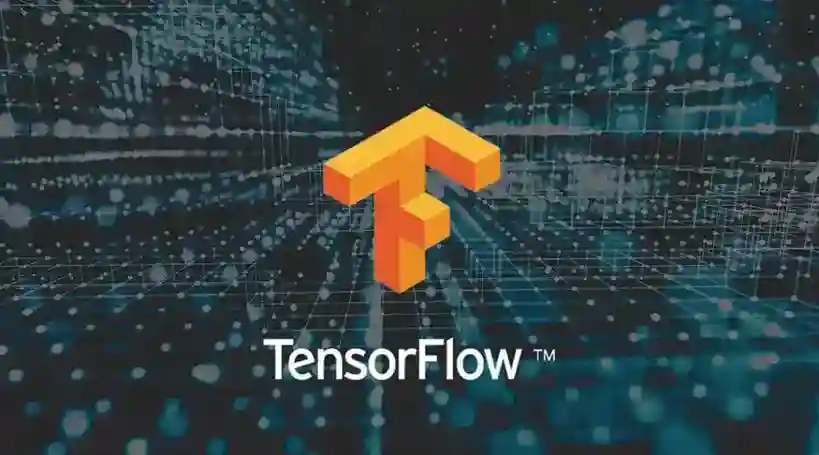Blogs / TensorFlow: A Powerful Framework for Machine Learning and Artificial Intelligence
TensorFlow: A Powerful Framework for Machine Learning and Artificial Intelligence

Introduction
TensorFlow is one of the most popular and widely used deep learning and AI frameworks, developed by the Google Brain team and released in 2015. Thanks to its high performance and flexibility, it has been embraced by researchers and AI engineers worldwide for building complex machine learning and deep learning models.
With support for large-scale and parallel data processing, TensorFlow allows developers to run sophisticated AI models on various hardware—CPUs, GPUs, and TPUs. This article provides a comprehensive overview of TensorFlow, its key features, tools, and techniques.
History and Development
TensorFlow began as a research project at Google Brain, aiming to create a reliable platform for deep learning and neural networks at scale. After early success internally, it was open-sourced in 2015. Since then, TensorFlow has evolved rapidly, with regular releases introducing advanced tools for AI development, and now boasts a large community of users in both academia and industry.
Key Features of TensorFlow
1. Flexibility
TensorFlow supports a wide spectrum of models—from traditional machine learning algorithms to complex deep architectures like CNNs and RNNs—allowing users to tailor solutions to their needs.
2. Scalability
TensorFlow can execute models on CPUs, GPUs, and Google's custom TPUs, significantly speeding up training. Its built-in support for distributed training lets you scale out across multiple machines for very large datasets.
3. Computational Graphs
TensorFlow uses a computational graph where each operation is a node and edges represent data flow. This graph-based approach enables efficient execution and optimization of complex workflows.
4. Multi-Language Support
While Python is the primary interface, TensorFlow also offers APIs in C++, Java, and JavaScript, making it accessible across diverse development environments.
TensorFlow Architecture
TensorFlow can be used via two main APIs:
Low-Level API
Gives full control over graph construction and execution, ideal for custom and research-level work.
High-Level API (Keras)
The Keras interface simplifies model definition and training, letting users build and iterate quickly without managing low-level details.
Applications of TensorFlow
Image Processing
Convolutional Neural Networks (CNNs) built with TensorFlow power face recognition, object detection, and medical image analysis applications.
Natural Language Processing (NLP)
Recurrent Neural Networks (RNNs) and Transformer models handle translation, sentiment analysis, and conversational AI in TensorFlow.
Generative Models
GANs and autoencoders in TensorFlow generate synthetic images, videos, and even music, driving creativity and data augmentation.
Big Data Analytics
TensorFlow’s parallel processing enables analysis of massive datasets, uncovering complex patterns in finance, marketing, and healthcare.
TensorFlow Ecosystem
TensorFlow Hub
A repository of pretrained models for quick integration and fine-tuning on new tasks.
TensorBoard
Visualization tool for inspecting model graphs, monitoring training metrics, and profiling performance.
TensorFlow Lite
Lightweight runtime for deploying models on mobile and embedded devices.
TensorFlow Extended (TFX)
Production-grade platform for managing end-to-end machine learning pipelines, including data validation, model serving, and monitoring.
Future of TensorFlow
Google continues to evolve TensorFlow rapidly, adding support for new hardware and simplifying the developer experience. As AI advances, TensorFlow is poised to remain a leading platform for research and enterprise deployment across industries.
Conclusion
TensorFlow’s combination of flexibility, scalability, and a rich ecosystem makes it a cornerstone of modern AI development. From image and language processing to generative modeling and big data analytics, TensorFlow empowers developers to build and deploy cutting-edge machine learning solutions at any scale.
✨
With DeepFa, AI is in your hands!!
🚀Welcome to DeepFa, where innovation and AI come together to transform the world of creativity and productivity!
- 🔥 Advanced language models: Leverage powerful models like Dalle, Stable Diffusion, Gemini 2.5 Pro, Claude 4.5, GPT-5, and more to create incredible content that captivates everyone.
- 🔥 Text-to-speech and vice versa: With our advanced technologies, easily convert your texts to speech or generate accurate and professional texts from speech.
- 🔥 Content creation and editing: Use our tools to create stunning texts, images, and videos, and craft content that stays memorable.
- 🔥 Data analysis and enterprise solutions: With our API platform, easily analyze complex data and implement key optimizations for your business.
✨ Enter a new world of possibilities with DeepFa! To explore our advanced services and tools, visit our website and take a step forward:
Explore Our ServicesDeepFa is with you to unleash your creativity to the fullest and elevate productivity to a new level using advanced AI tools. Now is the time to build the future together!